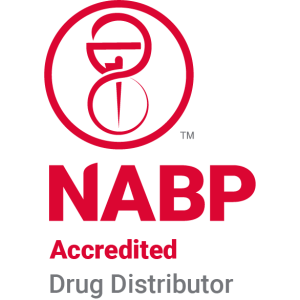What are the benefits of reducing infusion volume?
Understanding Infusion Volumes
The practice of reducing infusion volume has become an area of interest in modern medical treatments. As healthcare professionals strive to improve patient outcomes while reducing potential risks, understanding the implications of infusion strategies is crucial. This article delves into the benefits of reducing infusion volumes, particularly how these practices enhance patient safety, efficiency of drug delivery, and overall clinical outcomes.
Physiological and Clinical Impacts of Infusion Rates

What are the physiological and clinical impacts of different intravenous fluid infusion rates?
The infusion rate of intravenous (IV) fluids significantly influences fluid and electrolyte balance in patients. Slow infusion rates have been associated with several beneficial outcomes:
- Lower Mortality Rates: Some studies suggest that slower infusion rates can lead to lower mortality, particularly in critically ill patients.
- Reduced Blood Loss: Slower infusions result in less blood loss during treatment, suggesting a gentler approach can be advantageous.
- Improved Plasma Volume Expansion: Research shows that slower infusions may provide better or more sustained plasma volume expansion, essential for maintaining hydration status.
- Decreased Edema: With slowly administered fluids, less edema occurs, indicating better fluid management overall.
Conversely, fast infusion rates may lead to complications:
- Fluid Overload Risks: Rapid fluid delivery can cause symptoms like headache, hypertension, and respiratory distress due to overload.
- Variable Response: Although some studies report no significant plasma volume differences with varying rates, it highlights that effects may not be universal across all patients.
These physiological impacts emphasize the importance of adjusting infusion rates based on patient needs and circumstances to optimize outcomes.
Advantages of Slower Infusion Rates

What are the advantages of slower intravenous fluid infusion rates in clinical practice?
Slower intravenous fluid infusion rates provide several advantages in clinical practice. The most significant benefit is the reduction in the risk of fluid overload. This is especially critical for patients with heart or kidney issues, as it helps prevent severe complications such as pulmonary edema.
Improved Medication Delivery
Additionally, slower infusion rates enable more accurate medication delivery. This ensures pharmacological agents are administered within their optimal therapeutic ranges, maximizing effectiveness while minimizing toxicity. Patients can receive targeted dosages without the risk of overwhelming their systems.
Enhanced Patient Monitoring
Moreover, the rate of infusion allows for improved patient monitoring. Healthcare providers can more easily observe any adverse reactions or changes in the patient's condition, facilitating timely interventions. These aspects contribute to better therapeutic outcomes and increased patient safety in clinical settings.
Importance of Infusion Volume

What is infusion volume and why is it important?
Infusion volume refers to the total amount of fluid administered to a patient, critical for effective treatment. Proper management of infusion volume ensures patients receive the right dose of fluids and medications within a specified timeframe. This is vital for maintaining drug efficacy and enhancing patient safety.
Factors such as flow rates, drop factors of the IV set, and duration of infusion all come into play in determining the correct infusion volume. Adjustments using macrodrip and microdrip sets provide the necessary precision to deliver fluids.
In emergencies, precise calculations of infusion rates are essential. They bolster patient care by minimizing complications and improving treatment outcomes. Overall, understanding infusion volume and its implications is key for effective medical treatment management.
Managing Residual Volume in IV Tubing

Why is it important to manage residual volume in IV tubing?
Managing residual volume in IV tubing is crucial because a significant amount of medication, particularly antimicrobials and chemotherapy agents, can remain in the tubing after administration. This retention can lead to underdosing, particularly when the residual volume ranges from 2% to 60% of the intended dose, depending on factors such as infusion type and tubing length.
To mitigate this issue, flushing the IV lines after medication administration is recommended. This procedure helps to minimize drug loss, ensuring that patients receive the full prescribed doses. The importance of standardized flushing protocols cannot be overstated; inconsistencies in practice may lead to inadvertent medication errors, compromising patient health.
Ultimately, effective management of residual volume improves drug delivery efficiency and reduces the risks of therapeutic failures. The consequences of neglecting this aspect can include severe complications, such as increased susceptibility to infections like sepsis, making it a critical consideration in patient care.
Clinical Outcomes of Volume-Controlled Infusions

How do volume-controlled intravenous infusions improve clinical outcomes?
Volume-controlled intravenous (IV) infusions play a vital role in enhancing clinical outcomes by ensuring precise medication delivery. This precision significantly reduces the risk of medication errors and adverse effects that can arise from improper dosing.
For instance, the effective management of infusion rates leads to notable improvements in patient recovery. Studies have linked slower infusion rates to outcomes such as lower mortality rates and fewer ventilator-free days among critically ill patients. Moreover, slower infusions have been associated with less edema and reduced blood loss, offering a less traumatic experience during treatment.
Smart infusion pumps also contribute to this precision, minimizing programming errors and preventing harmful drug interactions. However, human error remains a concern, highlighting the need for continuous training for healthcare providers. Therefore, meticulous infusion management, whether through volume control or advanced technology, is crucial for optimizing patient care and improving clinical outcomes.
Benefits of Standardizing Infusion Volumes
What are the benefits of standardizing infusion volumes in enhancing patient care?
Standardizing infusion volumes significantly enhances patient care by ensuring that medications are delivered consistently and safely. This consistency is essential, especially for high-risk medications like anticancer agents, where the infusion rate can greatly affect both efficacy and safety.
Consider the administration of carboplatin; a slower infusion rate can help minimize hypersensitivity reactions. In contrast, a rapid infusion of gemcitabine can prevent complications linked to prolonged infusion times. Therefore, adherence to standardized volume protocols not only mitigates risks but also optimizes therapeutic outcomes.
Moreover, a systematic approach to managing infusion volumes aids in reducing medication errors. Variability in how medications are infused can lead to complications that detract from patient safety. Properly structured protocols ensure that healthcare teams follow uniform practices, which instills confidence in patients and providers alike.
This standardization cultivates a more reliable healthcare environment, where patients can expect consistent therapy delivery. Ultimately, embracing infusion volume standardization paves the way for improved patient outcomes, enhancing the overall quality of care delivered across settings.
Specific Benefits in Chemotherapy and CAR T-cell Therapy
Reduction of Medication Waste
One significant advantage of optimizing infusion rates in chemotherapy is the reduction of medication waste. Studies highlight that utilizing secondary administration sets and microbore tubing minimizes residual volume left in the system. For instance, standard infusion lines can waste between 2.8% to 33.5% of the prescribed medication due to their longer design. By strategically shortening these lines, medical professionals ensure that more of the drug is delivered effectively to the patient and reduces leftover amounts that might lead to medication bolusing.
Efficacy in Drug Delivery
In CAR T-cell therapy, managing the Metabolic Active Tumor Volume (MATV) plays a crucial role in patient outcomes. Prolonged infusions of specific medications like beta-lactam antibiotics can achieve better pharmacodynamic effectiveness, especially for pathogens with higher minimum inhibitory concentrations. Additionally, research shows that a lower MATV correlates with improved overall survival and time to progression in patients treated with CAR T-cell therapy. These findings reveal that both optimized infusion volumes and strategic timing can significantly enhance treatment effectiveness.
Volume Management in Parenteral Nutrition and Beyond
What are the benefits of parenteral nutrition?
Cyclic parenteral nutrition (PN) offers practical advantages, particularly for long-term or home care patients. By allowing for interruptions in nutrient delivery, patients enjoy greater freedom from being tethered to infusion equipment. This method requires higher nutrient infusion rates within a shorter timeframe, which can stabilize blood glucose levels, benefiting patients with elevated bilirubin concentrations.
How does fluid management impact patient outcomes?
Effective fluid management is crucial in critical care settings. Slower infusion rates have been associated with several positive outcomes: they may reduce mortality and blood loss, improve plasma volume expansion, and lessen edema. This suggests that careful control of infusion rates can lead to more effective hydration and better overall patient management.
In understanding the dynamics of infusion, the volume and rate significantly impact the administration of treatments, especially when balancing the risks of medication loss due to tubing dead space. Addressing these issues ensures that patients receive complete and effective doses.
The Future of Infusion Practices
Reducing infusion volumes presents a promising avenue for enhancing patient care by diminishing risks and enhancing the efficiency of drug delivery systems. As healthcare continues to evolve, optimizing infusion strategies will likely remain a cornerstone of effective medical treatment. Future advancements may further refine these approaches, tailored to individual patient needs, thereby continuing to elevate the standards of healthcare and patient safety.
References
- Physiological and clinical effects of different infusion rates ... - PubMed
- The impact of carrier flow rate and infusion set dead-volume on the ...
- The Effects of Residual Volume Left in IV Tubing Resulting in ...
- Additional Strategies to Improve Complete Delivery of Small-Volume ...
- Infusion Rate - an overview | ScienceDirect Topics
- Importance of Infusion Volume and Pump Characteristics in ...
- Drug Flow Through Clinical Infusion Systems: How Modeling of the ...
- Reducing Infusion Times for Isatuximab in Myeloma














